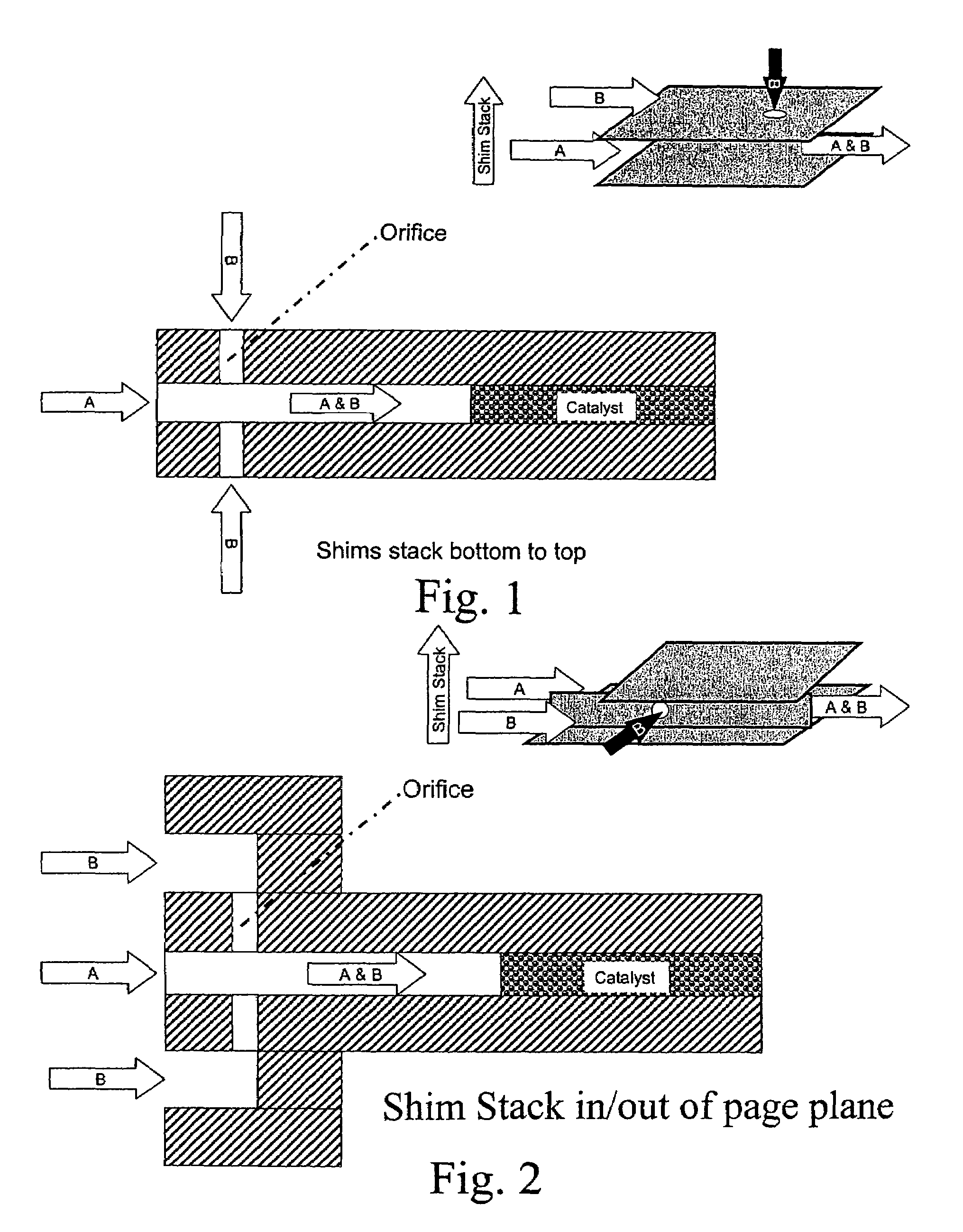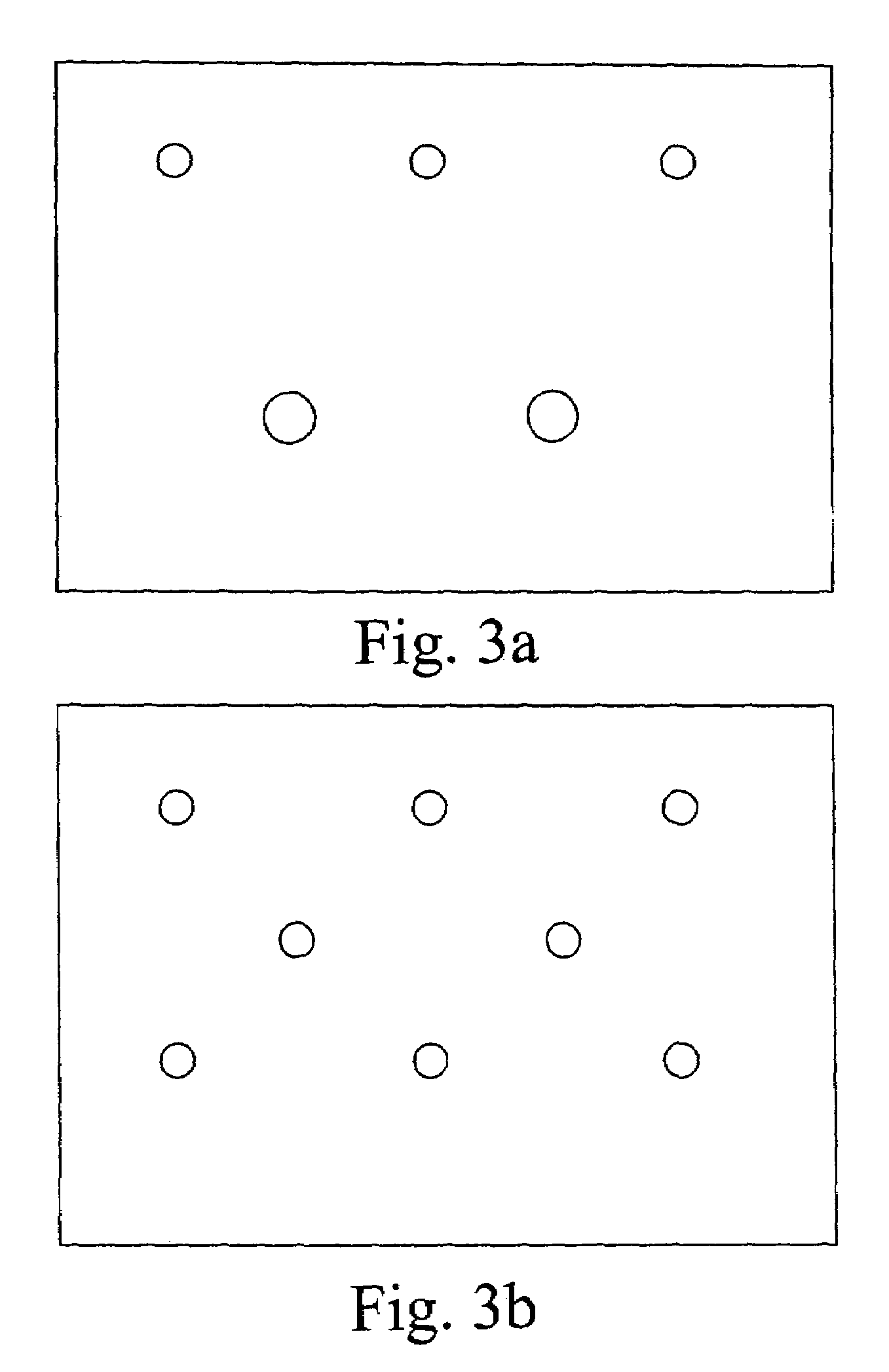In situ mixing in microchannels
a microchannel and microchannel technology, applied in the field of microchannel mixing, can solve the problems of inability to infer the optimal momentum flux ratio range of good mixing, and the inability to calculate the momentum flux of the second reactant, etc., to reduce the flammability of the mixture, and reduce the effect of flammability
- Summary
- Abstract
- Description
- Claims
- Application Information
AI Technical Summary
Benefits of technology
Problems solved by technology
Method used
Image
Examples
Embodiment Construction
Mixing Prior to a Reaction Zone
[0058]The mixing of reactants, such as oxidants and hydrocarbons, may occur upstream of a reaction chamber, preferably within a microchannel either immediately upstream from the catalyst zone or further upstream and separated by a heat exchange section or by another section for conducting a first reaction or a separation. It may be advantageous to mix streams, such as methane and oxygen, immediately after entering a device at low temperature. The combined flammable mixture may then flow through an integral heat exchanger to raise the mixture temperature prior to entering a catalytic zone housed within the contiguous microchannel.
[0059]In some embodiments, otherwise explosive mixtures can be safely handled inside microchannels due to quenching at the microchannel walls that prevents explosions or thermal runaway. The mixture may undergo additional heat exchange to raise or cool the temperature as desired. The mixture also may not undergo additional heat...
PUM
| Property | Measurement | Unit |
|---|---|---|
| distance | aaaaa | aaaaa |
| velocity | aaaaa | aaaaa |
| angle | aaaaa | aaaaa |
Abstract
Description
Claims
Application Information
 Login to View More
Login to View More - R&D
- Intellectual Property
- Life Sciences
- Materials
- Tech Scout
- Unparalleled Data Quality
- Higher Quality Content
- 60% Fewer Hallucinations
Browse by: Latest US Patents, China's latest patents, Technical Efficacy Thesaurus, Application Domain, Technology Topic, Popular Technical Reports.
© 2025 PatSnap. All rights reserved.Legal|Privacy policy|Modern Slavery Act Transparency Statement|Sitemap|About US| Contact US: help@patsnap.com



